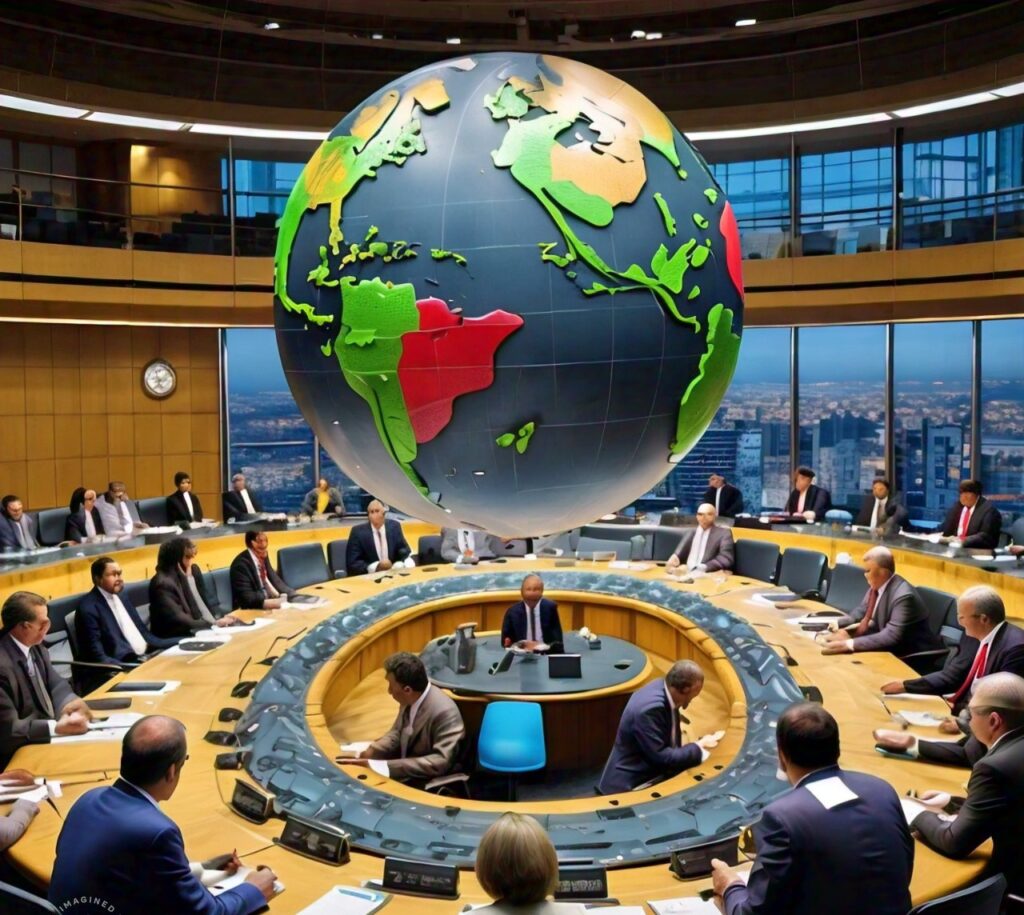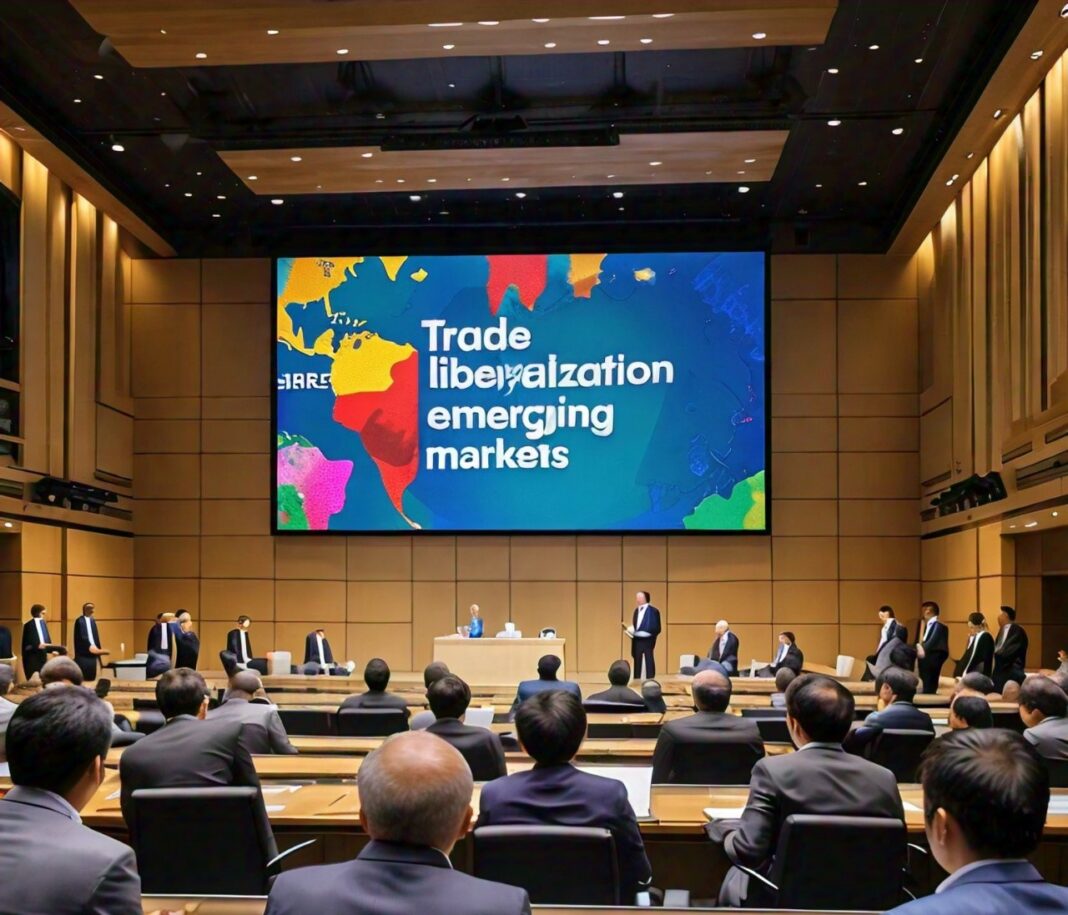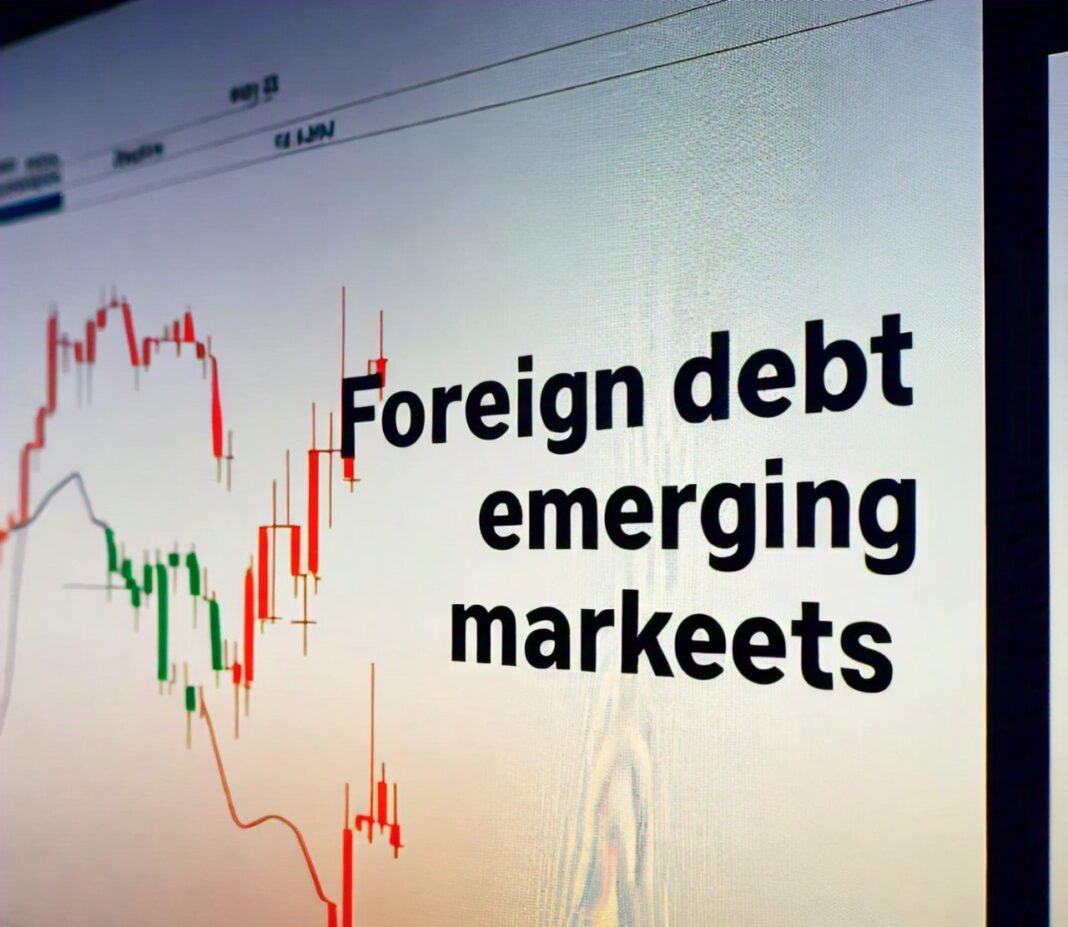Trade liberalization is the process of reducing or eliminating trade barriers, such as tariffs and quotas, to facilitate the free flow of goods and services between countries. In the context of emerging markets, this approach holds significant promise for fostering economic growth and enhancing global competitiveness. As these economies strive to integrate into the global market, understanding the dynamics of trade liberalization becomes crucial for policy makers who aim to craft effective economic strategies.
Emerging markets are characterized by rapid growth, increasing industrialization, and evolving consumer bases. However, many of these nations face substantial trade barriers that hinder their potential. By reducing these obstacles, emerging economies can not only boost their exports but also attract foreign direct investment (FDI), which is vital for long-term development. Moreover, trade liberalization can lead to lower prices and greater variety for consumers, while also creating new job opportunities and enhancing workforce skills.
This article aims to provide policy makers with evidence-based recommendations for developing and refining trade policies that promote liberalization in emerging markets. By exploring the advantages of reducing trade barriers, the analysis will highlight how such measures can catalyze economic transformation and provide a pathway to sustainable development. As we delve deeper into the current landscape of trade in these regions, the goal is to equip decision-makers with actionable insights that can drive effective policy interventions.
The Current Landscape of Trade in Emerging Markets
Key Characteristics of Emerging Markets
Emerging markets are defined by their rapid economic growth, increasing industrialization, and a transition from low to middle-income status. These economies often exhibit a mix of modern and traditional sectors, with a growing consumer base that is becoming more integrated into the global economy. Key characteristics include:
- High Growth Rates: Emerging markets often experience higher GDP growth compared to developed economies, driven by factors such as urbanization, demographic changes, and increased consumption.
- Diversifying Economies: Many of these countries are moving away from reliance on primary commodities, diversifying into manufacturing and services, which enhances their global competitiveness.
- Young Population: A relatively young and growing population can provide a significant labor force, fostering innovation and entrepreneurship.
Existing Trade Barriers and Their Impact
Despite the potential benefits of trade liberalization, many emerging markets still face substantial trade barriers that hinder their economic progress. These barriers can include:
- Tariffs: High tariffs can limit access to foreign markets and increase costs for consumers and businesses. For instance, many emerging economies impose tariffs on agricultural products, which can inhibit competitiveness.
- Non-Tariff Barriers: These include quotas, import licensing, and complex regulatory requirements that can create significant hurdles for foreign businesses and hinder trade.
- Infrastructure Deficiencies: Poor infrastructure, such as inadequate transportation and logistics systems, can exacerbate the effects of trade barriers, making it difficult for goods to move efficiently.
- Political and Economic Instability: Uncertainty in political environments can deter investment and trade, as businesses seek stable and predictable markets.
Recent Trends in Global Trade Policies
The global landscape of trade is continually evolving, influenced by various factors including geopolitical tensions, technological advancements, and shifts in consumer preferences. Recent trends include:
- Rise of Regional Trade Agreements: Many emerging markets are increasingly engaging in regional trade agreements, which can simplify trade processes and reduce barriers within specific regions.
- Focus on Sustainability: There is a growing emphasis on sustainable trade practices, with policies aimed at promoting environmentally friendly products and methods.
- Digital Trade: The rise of e-commerce and digital platforms has opened new avenues for trade, particularly for small and medium-sized enterprises (SMEs) in emerging markets.
- Protectionism and Trade Wars: A backlash against globalization has led to increased protectionism in some regions, which can impact emerging markets seeking to expand their trade relationships.
Understanding this landscape is crucial for policy makers as they navigate the complexities of trade liberalization in emerging markets. By recognizing the existing barriers and trends, they can better formulate strategies that capitalize on the opportunities presented by a more open trading environment.

Advantages of Reducing Trade Barriers
Reducing trade barriers in emerging markets can yield significant economic and social benefits. This section explores the key advantages, providing a comprehensive analysis of how trade liberalization can transform these economies.
Economic Growth and Development
- Increased Foreign Direct Investment (FDI)
Trade liberalization often attracts FDI, as foreign investors seek to capitalize on new market opportunities. A study by the World Bank highlights that countries with reduced trade barriers typically experience a rise in FDI inflows, which can lead to job creation and technology transfer. For example, Vietnam’s liberalization policies have significantly increased FDI, particularly in manufacturing and technology sectors (World Bank). - Enhanced Export Opportunities
By lowering tariffs and non-tariff barriers, emerging markets can enhance their export capabilities. This increased access to international markets allows local businesses to scale up production and diversify their offerings. A report by the International Monetary Fund (IMF) indicates that trade liberalization can lead to a boost in exports, empowering economies to achieve sustainable growth (IMF).
Also Read: The Impact of Trade Policies on Emerging Markets
Consumer Benefits
Lower Prices
Reducing trade barriers often leads to lower prices for consumers. Competitive pressures from international suppliers can drive down prices for goods and services, making them more affordable for the average citizen. For instance, the removal of tariffs on electronics in many emerging markets has resulted in reduced costs for consumers, stimulating demand and access.
Greater Product Variety
Trade liberalization expands the range of products available to consumers. By allowing foreign goods into the market, consumers benefit from increased choices and improved quality. Research indicates that markets that embrace liberalization see enhanced competition, which often results in better product offerings (OECD).
Job Creation and Skill Development
- New Employment Opportunities
As trade barriers diminish, industries that cater to export markets tend to grow, leading to job creation. The Asian Development Bank (ADB) reports that countries like Bangladesh have seen significant job growth in the textile sector as a direct result of trade liberalization (ADB). - Workforce Skill Enhancement
Increased competition and exposure to international markets necessitate a more skilled workforce. Trade liberalization encourages investment in education and training, which enhances overall productivity. Countries that have successfully liberalized trade often implement programs to upskill their labor force, ensuring that workers can adapt to new opportunities.
Evidence-Based Recommendations for Policy Makers
To effectively promote trade liberalization in emerging markets, policy makers must adopt a strategic approach that encompasses various elements of trade policy. This section outlines evidence-based recommendations designed to foster a conducive environment for trade while ensuring sustainable economic growth.
Comprehensive Trade Agreements
- Bilateral and Multilateral Agreements
Engaging in comprehensive trade agreements can significantly reduce trade barriers and increase market access. Policy makers should prioritize negotiating bilateral and multilateral trade agreements that align with the interests of their economies. For instance, the Comprehensive and Progressive Agreement for Trans-Pacific Partnership (CPTPP) has provided member countries with enhanced access to diverse markets while reducing tariffs (CPTPP). - Case Studies of Successful Agreements
Examining successful trade agreements can offer valuable insights. The African Continental Free Trade Area (AfCFTA) aims to create a single market for goods and services across Africa, potentially increasing intra-African trade by over 50% (AfCFTA). Policy makers should analyze these case studies to understand best practices and potential pitfalls.
Gradual Reduction of Tariffs and Non-Tariff Barriers
- Phased Approaches to Tariff Reductions
Implementing a phased approach to tariff reductions allows domestic industries to adapt gradually. This method can mitigate potential shocks to local businesses and provide time for them to enhance competitiveness. The World Trade Organization (WTO) suggests that gradual liberalization can lead to more sustainable economic adjustments (WTO). - Monitoring and Evaluation Mechanisms
Establishing robust monitoring and evaluation mechanisms is critical to assess the impacts of tariff reductions. Policy makers should develop frameworks to evaluate the effectiveness of trade policies, ensuring that adjustments can be made in response to emerging challenges.
Supporting Domestic Industries
Incentives for Local Businesses
To ensure that local industries can compete in a liberalized market, governments should provide incentives such as tax breaks, grants, and access to finance. These measures can support small and medium-sized enterprises (SMEs) in scaling up production and improving quality. The International Trade Centre (ITC) emphasizes the importance of supporting SMEs to capitalize on trade opportunities (ITC).
Strengthening Infrastructure and Logistics
Enhancing infrastructure is crucial for facilitating trade. Investments in transportation, logistics, and technology can significantly improve the efficiency of supply chains. The Global Infrastructure Facility highlights the importance of infrastructure development in enabling trade and attracting investment (GIF).
Regulatory Harmonization
Aligning Standards with International Practices
Regulatory harmonization involves aligning national standards with international practices to facilitate smoother trade. Policy makers should engage in dialogues with international organizations to adopt best practices in product standards, safety regulations, and quality assurance.
Simplifying Customs Procedures
Streamlining customs procedures can enhance the efficiency of cross-border trade. Implementing digital solutions, such as e-customs and automated clearance systems, can reduce delays and costs associated with trade. The World Bank’s Doing Business report highlights the impact of efficient customs processes on trade facilitation (Doing Business).

Addressing Potential Challenges
While the benefits of trade liberalization in emerging markets are significant, policy makers must also be prepared to address potential challenges that may arise as they implement new trade policies. This section explores common obstacles and provides strategies to mitigate their impact.
Economic Disparities and Inequality
Mitigating Negative Impacts on Vulnerable Populations
Trade liberalization can exacerbate economic disparities, particularly if certain sectors or regions benefit more than others. To address this, policy makers should implement targeted programs aimed at vulnerable populations, such as retraining initiatives and social safety nets. The International Labour Organization (ILO) emphasizes the importance of inclusive policies that protect the most affected workers during transitions.
Social Safety Nets and Support Programs
Establishing social safety nets can help cushion the impact of job losses in sectors that may decline due to increased competition. Programs such as unemployment benefits, job placement services, and skills training can provide essential support. The World Bank provides guidelines on designing effective social protection systems that can adapt to changing economic conditions (World Bank).
Political Resistance and Public Opinion
Engaging Stakeholders in Dialogue
Resistance to trade liberalization often stems from concerns about job security and local industry competitiveness. To counter this, policy makers should engage in open dialogues with stakeholders, including businesses, labor unions, and community organizations. Effective communication can help build trust and foster a shared understanding of the benefits of trade liberalization. The OECD highlights the importance of stakeholder engagement in policy formulation (OECD).
Building Public Support for Trade Policies
To garner public support, policy makers should focus on educating the populace about the long-term benefits of trade liberalization. Campaigns that highlight success stories, job creation statistics, and consumer benefits can help shift public opinion. Case studies from countries that have successfully navigated trade liberalization can serve as powerful examples. For instance, the experience of Chile, which has seen substantial economic growth through trade liberalization, can provide valuable lessons (World Bank).
Maintaining Regulatory Standards
Balancing Liberalization with Regulatory Integrity
As trade barriers are reduced, maintaining high regulatory standards is crucial to ensure consumer safety and environmental protection. Policy makers should prioritize the establishment of clear guidelines that balance trade facilitation with the need for robust regulations. The WTO’s Trade Policy Review Mechanism provides a framework for countries to discuss and enhance their regulatory practices
Monitoring Environmental Impacts
Trade liberalization can lead to increased production and consumption, which may have adverse environmental effects. Policy makers should implement environmental assessments and ensure compliance with sustainability standards. The United Nations Conference on Trade and Development (UNCTAD) emphasizes the need for sustainable trade practices that consider environmental impacts.

Case Studies of Successful Trade Liberalization
Examining case studies of successful trade liberalization provides valuable insights into effective strategies and practices that policy makers can adopt. This section highlights two notable examples: Vietnam and Mexico, showcasing their experiences and the lessons learned from their trade liberalization journeys.
Vietnam: Economic Transformation through Trade
Background
Since the implementation of the Đổi Mới (Renovation) reforms in the late 1980s, Vietnam has transformed from a centrally planned economy to a socialist-oriented market economy. These reforms included significant trade liberalization measures that facilitated the country’s integration into the global economy.
Key Trade Policies
Vietnam’s accession to the World Trade Organization (WTO) in 2007 marked a pivotal moment in its trade liberalization efforts. The country committed to reducing tariffs and non-tariff barriers, which helped boost exports and attract foreign direct investment (FDI). Notably, the Comprehensive and Progressive Agreement for Trans-Pacific Partnership (CPTPP) further opened markets for Vietnamese goods, particularly in agriculture and textiles (CPTPP).
Results and Impact
Vietnam has experienced significant economic growth, with GDP growth averaging around 6-7% annually in recent years. The country’s export sector has also flourished, becoming one of the leading exporters in Southeast Asia. According to the World Bank, Vietnam’s poverty rate has fallen dramatically, from around 60% in the 1990s to approximately 6% in recent years (World Bank).
Lessons Learned
Key lessons from Vietnam’s experience include the importance of gradual reform, the role of government in supporting local industries, and the need for robust infrastructure to facilitate trade.
Mexico: NAFTA and Its Impacts
Background
The North American Free Trade Agreement (NAFTA), implemented in 1994, was a landmark trade agreement between Mexico, the United States, and Canada. It aimed to eliminate trade barriers and promote economic cooperation among the three nations.
Key Trade Policies
NAFTA facilitated the reduction of tariffs on a wide range of goods, leading to increased trade flows between Mexico and its northern neighbors. The agreement also included provisions to protect intellectual property rights and establish labor and environmental standards (USTR).
Results and Impact
Mexico saw substantial growth in its manufacturing sector, particularly in automotive and electronics. The country’s exports to the United States increased significantly, contributing to a more integrated North American economy. According to the Congressional Research Service, trade with the U.S. increased from $81 billion in 1993 to over $600 billion in 2019 (CRS). However, the agreement also faced criticisms regarding labor rights and environmental impacts.
Lessons Learned
Mexico’s experience underscores the importance of addressing social and environmental concerns alongside trade liberalization. Ensuring that local communities benefit from trade agreements and implementing support programs for affected workers are crucial for maintaining public support.
Conclusion
Trade liberalization presents a powerful opportunity for emerging markets to achieve sustainable economic growth, enhance global competitiveness, and improve living standards for their populations. This article has explored the multifaceted advantages of reducing trade barriers, including increased foreign direct investment, expanded export opportunities, and consumer benefits. It has also outlined actionable, evidence-based recommendations for policy makers to implement effective trade policies.
As the global economy continues to evolve, emerging markets must embrace trade liberalization as a strategic pathway to economic development. Policy makers are encouraged to:
Engage in Comprehensive Trade Agreements: Actively pursue bilateral and multilateral agreements that align with national interests while promoting sustainable practices.
Implement Support Programs: Establish social safety nets and support initiatives to assist workers and communities affected by trade changes.
Foster Stakeholder Dialogue: Create platforms for dialogue among businesses, labor groups, and communities to build consensus and public support for trade policies.
Monitor and Evaluate Policies: Continuously assess the impact of trade liberalization efforts, allowing for adjustments that align with evolving economic conditions and societal needs.






